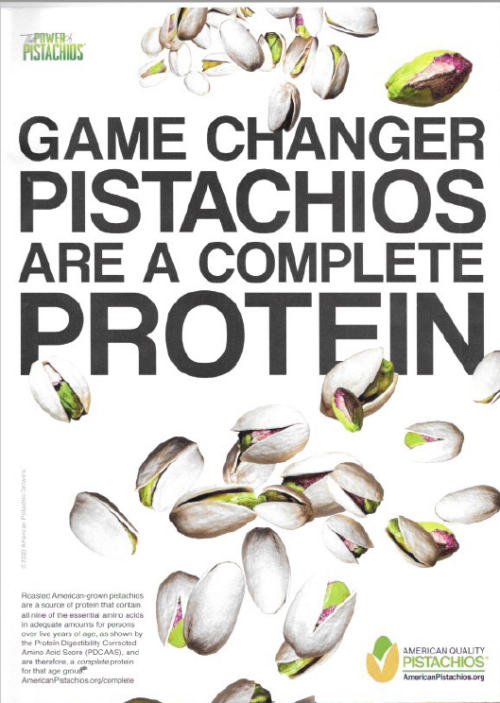A headline in FoodNavigator.com got my attention: “Heart-healthy walnuts could be the next big meat alternative as campaigns build on plant-based trend.”
Hoping to exponentially increase consumers’ already growing interest in walnuts, the California Walnut Board today is launching a two-prong marketing effort that will promote the nut’s health benefits and versatility.
The prongs are in-store promotions and a global marketing campaign—in nine countries no less—emphasizing how you only need to eat three handfuls a week to get their health benefits.
The article notes that the health benefits are based on published research. Alas, it fails to mention that the cited study was ” funded by The California Walnut Commission.”
The study: Walnuts and Vegetable Oils Containing Oleic Acid Differentially Affect the Gut Microbiota and Associations with Cardiovascular Risk Factors: Follow-up of a Randomized, Controlled, Feeding Trial in Adults at Risk for Cardiovascular Disease. Alyssa M Tindall, Christopher J McLimans, Kristina S Petersen, Penny M Kris-Etherton, Regina Lamendella. The Journal of Nutrition, nxz289, https://doi.org/10.1093/jn/nxz289.
Its conclusion: “…gut microbiota may contribute to the health benefits of walnut consumption in adults at cardiovascular risk.”
The California Walnut Commission has been diligent in funding studies reporting benefits from walnut consumption. Here’s another one:
The study: Effect of a 2-year diet intervention with walnuts on cognitive decline. The Walnuts And Healthy Aging (WAHA) study: a randomized controlled trial. Aleix Sala-Vila, Cinta Valls-Pedret, Sujatha Rajaram, Nina Coll-Padrós, Montserrat Cofán, Mercè Serra-Mir, Ana M Pérez-Heras, Irene Roth, Tania M Freitas-Simoes, Mónica Doménech, Carlos Calvo,1,2 Anna López-Illamola, Edward Bitok, Natalie K Buxton, Lynnley Huey, Adam Arechiga, Keiji Oda, Grace J Lee, Dolores Corella, Lídia Vaqué-Alcázar, Roser Sala-Llonch, David Bartrés-Faz, Joan Sabaté, and Emilio Ros. Am J Clin Nutr 2020;00:1–11.
Conclusions: “Walnut supplementation for 2 y had no effect on cognition in healthy elders. However, brain fMRI and post hoc analyses by site suggest that walnuts might delay cognitive decline in subgroups at higher risk.”
Conflicts of interest: AS-V, SR, JS, and ER have received research funding through their institutions from the California Walnut Commission, Folsom, CA, USA. JS and ER were nonpaid members of the California Walnut Commission Scientific Advisory Council. ER was a paid member of the California Walnut Commission Health Research Advisory Group. JS has received honoraria from the CaliforniaWalnut Commission for presentations. AS-V has received support from the CaliforniaWalnut Commission to attend professional meetings. All other authors report no conflicts of interest.
Comment: Some of the authors of this study work at Loma Linda, a university run by vegetarian Seventh-Day Adventists. As is unusual for industry-sponsored studies, this one found no delay in cognitive decline among older people eating walnuts. But the study’s conclusions spin the results to suggest that walnuts might, in fact, delay cognitive decline in higher risk subgroups—an interpretation bias.
Walnuts are good foods and eating them instead of candy or other high calorie junk-food snacks makes sense. Are walnuts better for you than any other nut? This study does not address that question. Studies funded by walnut trade associations have one and only one purpose: marketing walnuts.
As a reminder, I discussed issues related to sponsored research—including why the conduct of the science is not the problem with these studies—in my book, Unsavory Truth: How Food Companies Skew the Science of What We Eat.




